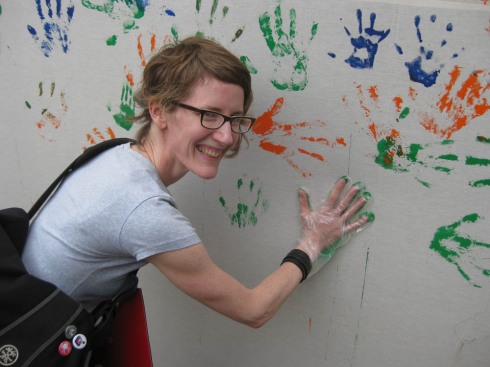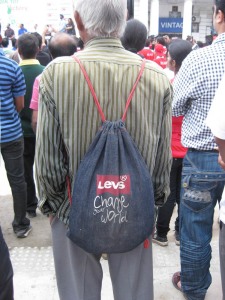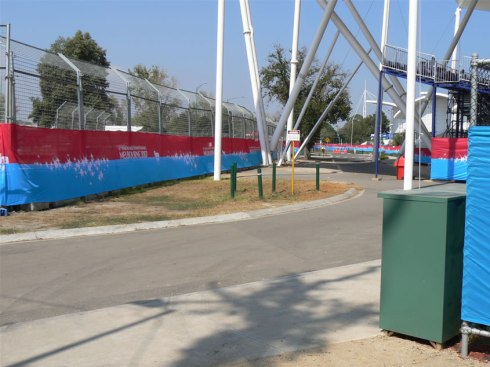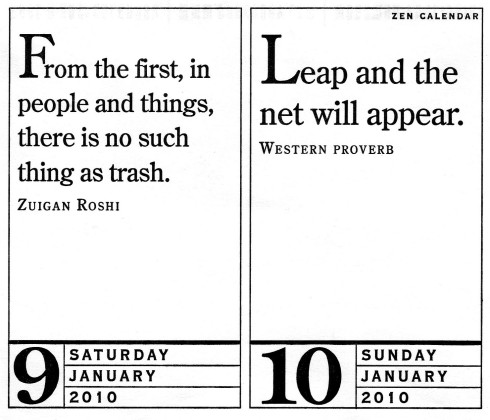If you’re calling Conserve India over the next few months it’s likely you’ll be talking to Jenna and Christina, Conserve’s American merchandising and design interns. Over a cup of office chai, we sat down to talk about their experience so far:

L to R: Christina and Jenna, Conserve India's interns
1. How did you come to be working at Conserve?
Christina: Our UC Davis university professor, Ann Savageau, got us involved in her awareness raising project called Bags Across the Globe (BAG). She’s also a friend of Anita’s and told us about the six month internship when we were taking her sustainable design class.
Jenna: we both jumped at the chance pretty quickly.
Christina: I was going home after finding out about the internship and a car drove by me with Hindi music blaring. That never happens where I live in California, so I took it as a sign and three days later had a one-way ticket to Delhi.
2. What have you learnt since arriving in July?
Jenna: We’re pretty much learning how to run a business, the whole reality of it. Our teachers were always saying ‘design can change the world’. But here we’re learning that you really can run a business while helping people; we’re learning the day-to-day of managing a fair trade enterprise.
Christina: We’ve been given amazing responsibilities – no American company would give us this much opportunity. We’re working on everything from product development through to everyday interactions with buyers such as checking on shipping and costings. We also help coordinate the sampling process.
3. Describe the sampling process?
Christina: There are three kinds of buyers: those that give us full specifications, where the design’s completely thought out and we just have to translate to our production team; those that have a rough idea, or partial specs, and we figure out how to make it and then tell them; and then those buyers who purchase in-house Conserve India designs.
Jenna: It’s pretty much just like doing up a prototype – the clients want to see and feel before they order in bulk.
4. Are you adding any new designs to the Conserve India catalogue?
Christina: We’re both working on designs that make best use of the Conserve India HRP (Handmade Recycled Plastic). The material is quiet stiff so were trying to come up with designs that showcase the uniqueness of this material and hopefully create a niche style in the current market.
5. So how’s living in Delhi?
Christina: It’s a really interesting place – full of contradictions and extremes. In the same suburb you can pass by slums and then find yourself at a brand new shopping mall with the top design houses like Dior and Louis Vuitton.
Jenna: There’s just so much going on in this city, sometimes it’s over stimulation. Took some getting used to but now it’s good.
6. Have you notice the preparation for the Commonwealth Games?
Christina: There’s construction everywhere – the city is changing so rapidly, every road seems to be undergoing transformation.
Jenna: Even Connaught Place, the central business district, is being completely torn up and reconstructed for the Games. It’s ironic that you need to create such a mess to beautify a place.
7. Are you going to the Games?
Christina: I want to! But it depends on my budget.
Jenna: Yeah totally. I really want to see the aquatic and gymnastics events.
8. What next after finishing your internships in December?
Jenna: I’m heading to New Zealand but don’t have any firm plans while I’m there. I’d like to work on a farm, maybe a sheep farm – I’m really into weaving so it’d be cool to do things with the wool. I’ll just be excited to be in nature after living in such a big city for six months.
Christina: I’m going to Egypt to meet a friend who’s studying in Ghana. Then we’re headed to Vienna to meet another friend and do some organic farming and helpx.net volunteer projects – there’s a camel farm in Austria we just have to work at. But while we’re travelling I’ll be trying to collect waste and make handicrafts and possibly trying to pick up some design experience in Europe. It’s all pretty open.
Tags: Commonwealth Games, conserve india, Delhi, Design, Internships

































